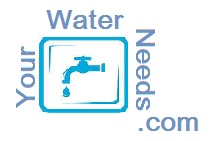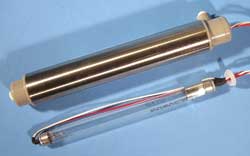| Ultraviolet
Water Filtration Systems
Ultraviolet (UV) technology
has been used for more than seven decades to eliminate
disease-causing microorganisms, primarily in industrial and
commercial applications. Today; however, this technology is
gaining popularity in the residential sector because:
- It can be applied to
almost any water system.
- It adds no chemicals to
the water.
- It wastes no water.
- It's inexpensive to
maintain.
To produce UV energy,
electrical current stimulates mercury vapor held between the
electrodes of a fluorescent-like lamp. The most commonly used UV
lamp is a low pressure mercury vapor lamp with an energy output
close to 265 nm most effective at killing microbes. Germicidal UV
lamps are made with "hard glass" quartz which transmits
92 percent of UV energy far more than alternative materials.
Waterborne diseases may be
caused by a wide variety of pathogenic microorganisms. Most are
made up of a cell wall, a cytoplasm membrane and a DNA-bearing
nucleic acid. Microbes are destroyed when UV light penetrates the
cell wall and cytoplasm membrane and is absorbed by the nucleic
acids. The UV energy rearranges DNA molecules by permanently
altering the genetic makeup and prevent the cells from
reproducing. It's then considered dead for all practical purposes.
The degree of destruction of microbes is a product of UV intensity
multiplied by contact time.
|

